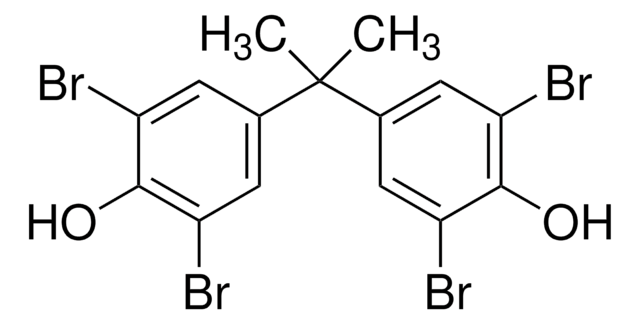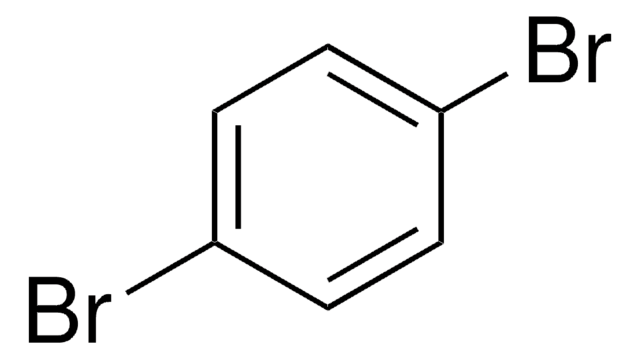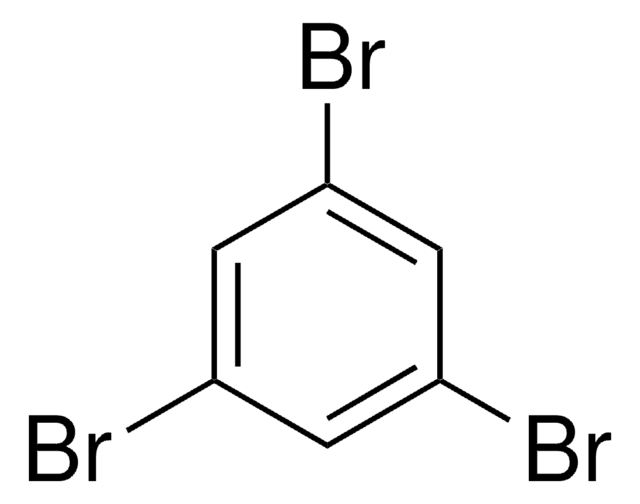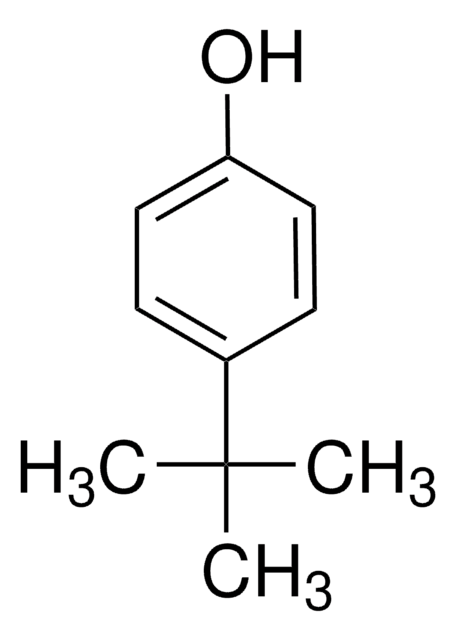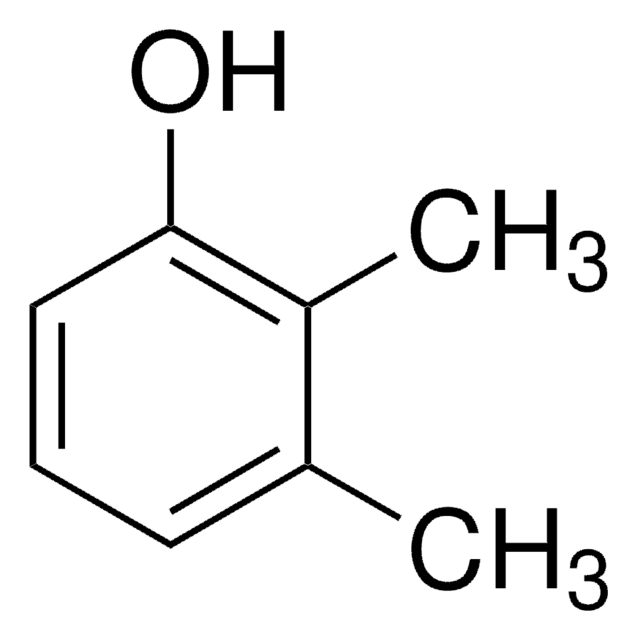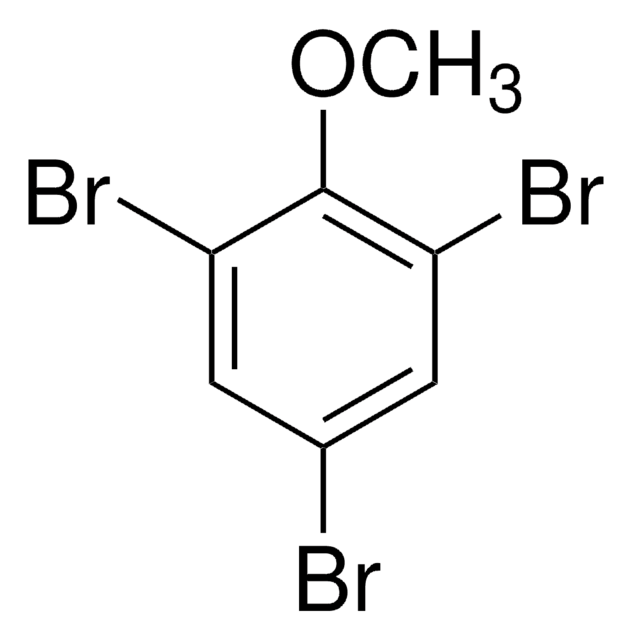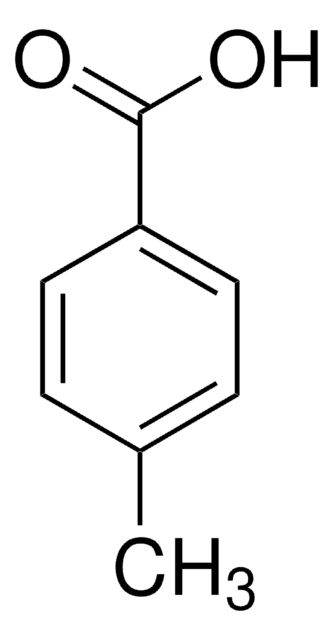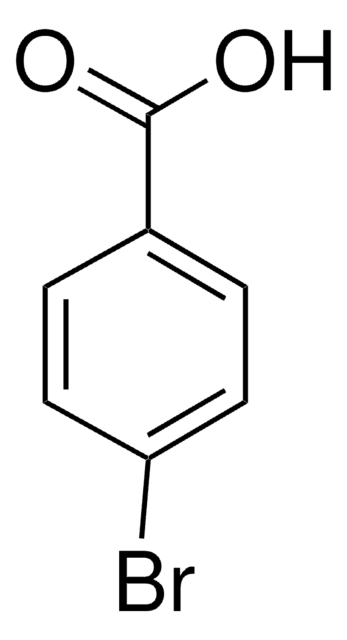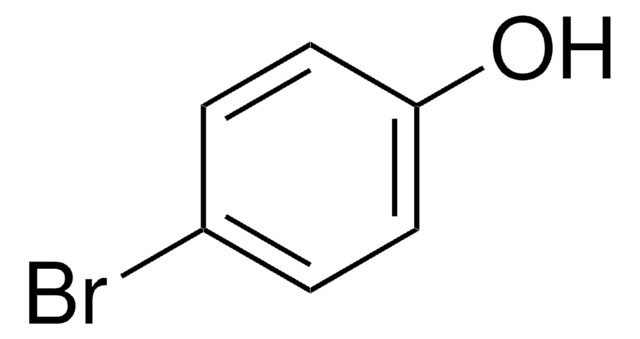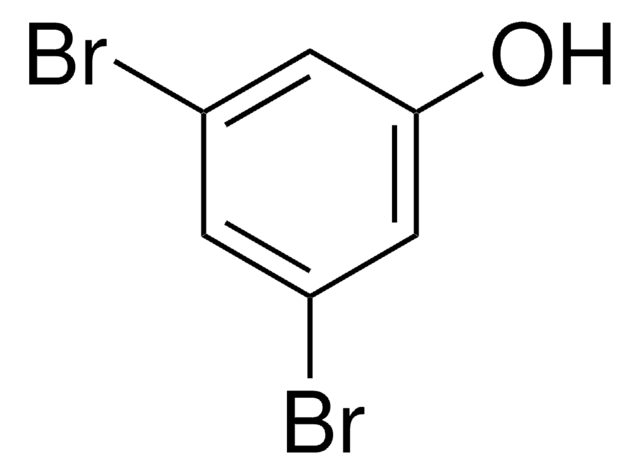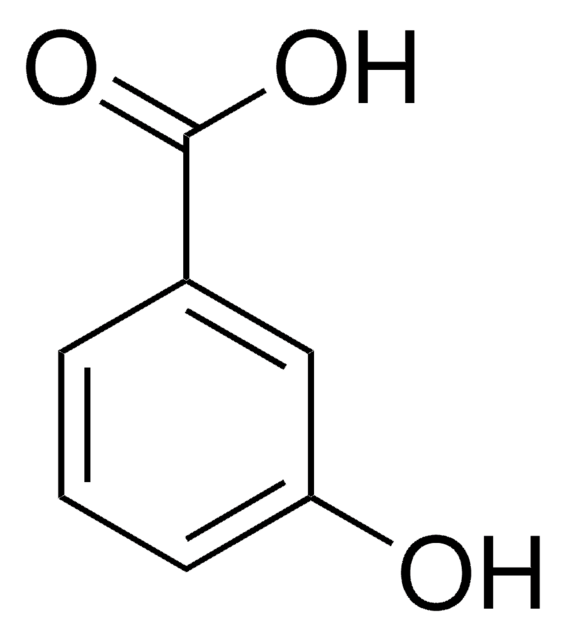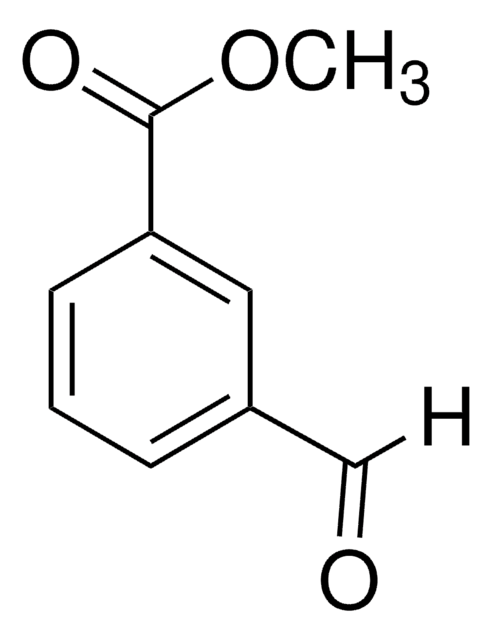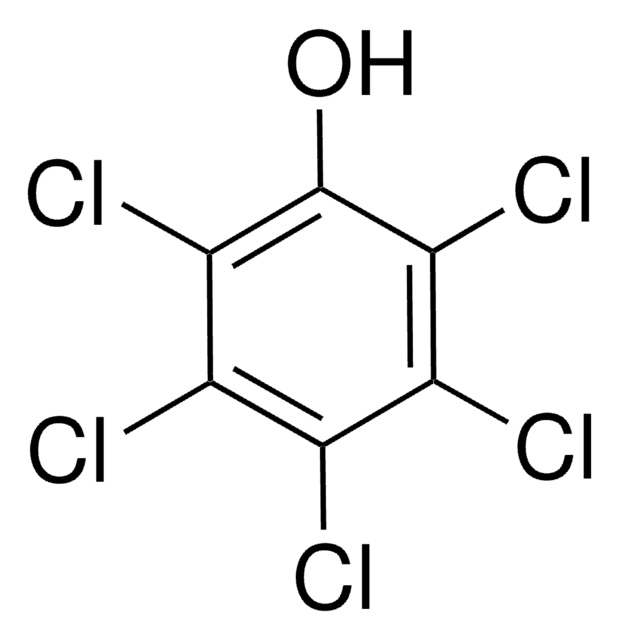137715
2,4,6-Tribromophenol
99%
Synonyme(s) :
1,3,5-Tribromo-2-hydroxybenzene, Bromol
About This Item
Produits recommandés
Densité de vapeur
11.4 (vs air)
Niveau de qualité
Pureté
99%
Point d'ébullition
282-290 °C/746 mmHg (lit.)
Pf
90-94 °C (lit.)
Solubilité
water: soluble 0.007g/100ml at 25 °C
chloroform: soluble
diethyl ether: soluble
ethanol: soluble
methanol: soluble
methylene chloride: soluble
Groupe fonctionnel
bromo
Chaîne SMILES
Oc1c(Br)cc(Br)cc1Br
InChI
1S/C6H3Br3O/c7-3-1-4(8)6(10)5(9)2-3/h1-2,10H
Clé InChI
BSWWXRFVMJHFBN-UHFFFAOYSA-N
Vous recherchez des produits similaires ? Visite Guide de comparaison des produits
Catégories apparentées
Description générale
Application
Mention d'avertissement
Warning
Mentions de danger
Conseils de prudence
Classification des risques
Aquatic Acute 1 - Eye Irrit. 2 - Skin Sens. 1
Code de la classe de stockage
11 - Combustible Solids
Classe de danger pour l'eau (WGK)
WGK 3
Point d'éclair (°F)
Not applicable
Point d'éclair (°C)
Not applicable
Faites votre choix parmi les versions les plus récentes :
Déjà en possession de ce produit ?
Retrouvez la documentation relative aux produits que vous avez récemment achetés dans la Bibliothèque de documents.
Les clients ont également consulté
Notre équipe de scientifiques dispose d'une expérience dans tous les secteurs de la recherche, notamment en sciences de la vie, science des matériaux, synthèse chimique, chromatographie, analyse et dans de nombreux autres domaines..
Contacter notre Service technique